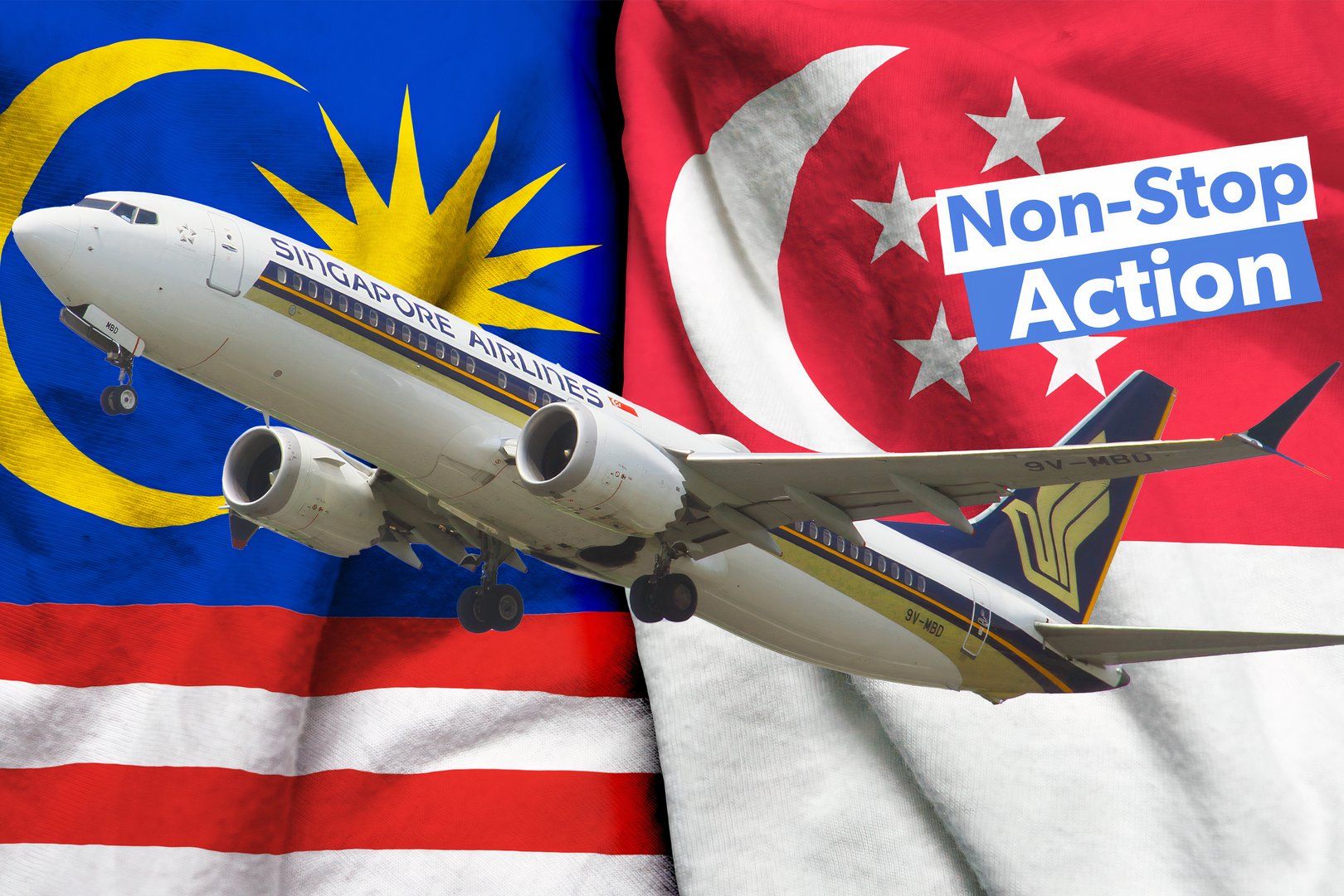The Singapore-Kuala Lumpur air corridor links two of the busiest hubs in Southeast Asia. In 2023, there were over 25,000 flights and 4 million seats available on this route. The city pair rose to become the busiest international route worldwide in 2023, although the latest data now has it second behind Hong Kong-Taipei.
As per data from aviation analytics company Cirium , a total of eight airlines fly between the two cities: Jetstar Asia AirAsia Ethiopian Airlines Firefly Malaysia Airlines Batik Air Malaysia Singapore Airlines Scoot Together, these airlines will offer over 1,420 roundtrips and more than half a million seats in August 2024, almost equaling its pre-pandemic peak in 2019. AirAsia is the most dominant player on the route this summer, operating 22.8% of flights, followed by Malaysia Airlines (20.

8%) and Singapore Airlines (16.7%). Why does Singapore-KL remain so popular? While many city pairings around the world still struggle to recover from the pandemic, Singapore-Kuala Lumpur had no such problems.
Demand remains strong, and the cities remain connected by both low-cost and full-service airlines. So, what makes the route between these neighboring countries so busy? Tourism: Travel between the two countries is not just all work and no play . In fact, holidaymakers make up 39% of Malaysians who travel to Singapore, the single largest travel purpose.
Residents from the island nation frequent Malaysia to enjoy affordable food and to shop at some of the region's largest shopping centers, while Malaysians travel down south to visit attractions such as Universal Studios Singapore and Jewel Changi Airport (yes, the airport is regarded as an attraction in itself !). Friends and family: The second most common reason for travel between Singapore and Malaysia this year was to visit friends and relatives (VFR). As mentioned, Singapore used to be part of Malaysia, which means it's not uncommon for families to be spread out between the countries.
Strong shared traditions also facilitate a lot of VFR holiday demand, with people flying to attend various ceremonies and holidays across the year. Economic activity: Singapore and Malaysia have a long history of economic and cultural ties, dating back to the 1960s when both nations were part of the Federation of Malaysia. Today, economic migration continues to take place, often with Malaysians commuting to Singapore for higher-paying work.
Business travel among high-level executives is also common on this route. Convenience: It's possible to travel between the two cities by road too, with a typical bus trip taking around five hours. However, traffic can get notoriously bad at peak times, meaning it could be longer.
At just an hour's flight, traveling by air is still quicker and more comfortable, even when taking into account the other time-consuming aspects of air travel (getting to/from airport, security, etc...
). Airlines and aircraft on the route Some of the leading airlines competing on this route include flag carriers Singapore Airlines and Malaysia Airlines, as well as low-cost airlines AirAsia, Scoot, Jetstar, and Firefly, the low-cost carrier subsidiary of Malaysia Airlines. Before the pandemic, the airports were also linked by Air Mauritius and Uzbekistan Airways on a fifth-freedom basis.
Airline Aircraft Flights Seats Jetstar Asia Airways A320 186 33,480 AirAsia A320 650 123,304 Ethiopian Airlines B787 36 10,408 Firefly ATR 72 364 26,208 Malaysia Airlines B737 594 101,788 Batik Air Malaysia B737 248 40,176 Singapore Airlines A350, B737 478 94,924 Scoot A320, B787 292 73,934 Find more news about Asian aviation here. On OAG's list of the busiest routes in the world, Singapore-Kuala Lumpur is the shortest, with a flight distance of just 184 miles (296 km). Interestingly, some airlines utilize widebodies for the hour-long flight despite the short route.
For example, Singapore Airlines operates the A350 on this route, while Ethiopian Airlines and Scoot serve the route with Boeing 787 Dreamliner. The cities are also connected with a link between their respective secondary airports. For example, Firefly connects Seletar Airport (XSP) in the northeast of Singapore to Kuala Lumpur's Subang Airport (SZB) with an ATR service.
Officially known as Sultan Abdul Aziz Shah Airport, the latter airport served as the primary airport for the Malaysian capital from 1965 until 1998, when the present international airport was opened. Scoot is the sixth and final airline to shortly commence jet flights at Kuala Lumpur Sultan Abdul Aziz Shah Airport, formerly the Subang Airport. It helps that both Singapore Changi and KLIA are modern airports capable of getting short-haul passengers in and out efficiently.
Service has also been steadily growing at Subang Airport, which recently welcomed Singaporean low-cost airline Scoot. Competition on the route While air travel is a popular mode of transport between Singapore and Malaysia, the two countries are, in fact, also connected via road and rail. The drive from Kuala Lumpur to Singapore takes about five hours, with buses frequently shuttling between the cities.
From the southernmost tip of Malaysia, there are two bridges (both under 1.2 miles) linking to Singapore over water. As for rail, there is no direct link between the two cities, with the journey involving a transfer at neighboring Johor Bahru.
In all, a train journey between Singapore and KL typically takes between six to eight hours, so it's easy to see why many prefer to fly instead. Flights are a much quicker option and are relatively affordable, one of the many reasons why the air corridor continues to be among the busiest in the world. Given the breadth of service quality available - from low-cost to full-service - airlines can accommodate everyone from budget tourists to business travel.
.



















